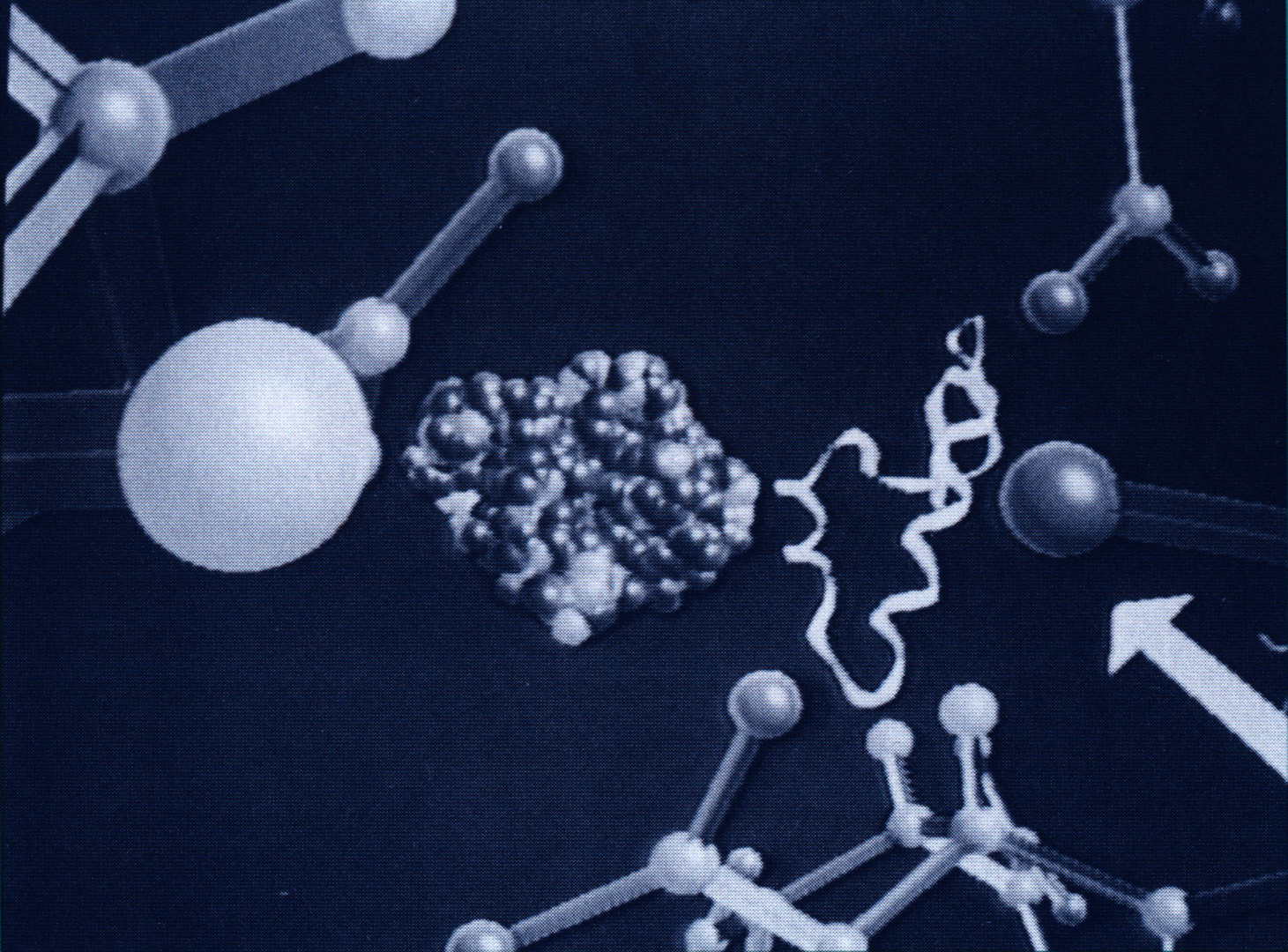“Flying Through Protein Molecules” by Holloway and Robinett
Conference:
Experience Type(s):
Title:
- Flying Through Protein Molecules
Program Title:
- Demonstrations and Displays
Presenter(s):
Collaborator(s):
Description:
- Clathrate. A highly energetic compound represented as a ball-and-stick model.
- DHFR (dihvdrofolate reductase) and Methotrexate. DHFR is a protein molecule and methotrexate is a drug molecule used in cancer treatment which is known to dock with DHFR. The drug molecule is positioned slightly disengaged from the docking position so that the user can fly in and see the “key and lock” spatial match at the docking site. Both are represented with CPK (sphere-or ) models.
- Crambin. A protein molecule is represented here with three different models: CPK (spheres represent individual atoms colored according to type), stick-only (sticks represent the bonds between the atoms), and ribbon (the amino acid chain that makes up the backbone of the model is represented as a ribbon). These three models are grouped together in the virtual world and have the same orientation.
Using a head-mounted display and a hand-held input device, the user flies through a virtual world containing several different giant molecules. Due to the molecules’ large size, the user can literally fly inside them and see them from the perspective of an atom.
One of the main problems with displaying a molecule is that there is no single “correct way” to do it.
Since the wavelength of light is not negligible relative to the size of a molecule, there is no way for one to “see” it. Therefore, many different representations are possible, and chemists use different ones depending on the situation. This demonstration contains several different representations for molecules including simple sphere-only models, ball-and-stick models, and a “ribbon” model, which represents the backbone of a protein molecule. The user can fly between a drug molecule and the active site of a protein molecule, then over to a volatile compound, and then on to three different representations of the same molecule. Velocity control allows a wide range of speeds, from rocketing between two molecules to a slow flyby of individual atoms.
The user wears a head-mounted display and uses a 3D mouse to navigate through a virtual world containing the following molecules:
The models are spread out in space so that the user can fly from one to the other and concentrate on each one individually. The user flies by pointing the 3D mouse in the desired direction and pressing a button.
Other Information:
Sponsors: National Institutes of Health, Defense Advanced Research Proiects Agency, National Science Founda-tion, Office of Naval Research
Hardware: VPL Evephone models 1 and 2, Polhemus Navigational Sciences 3Space magnetic tracker, Pixel-Planes 5. Macintosh IIci
Software: INC-developed software
Application: Molecular modeling
Type of System: Player, single-user
Interaction Class: Immersive, inclusive





